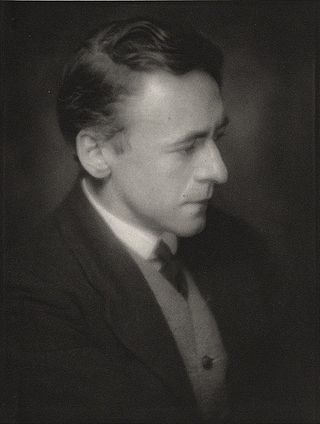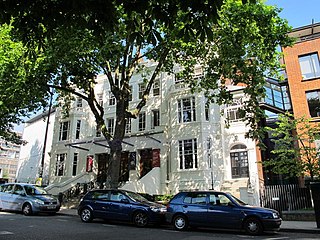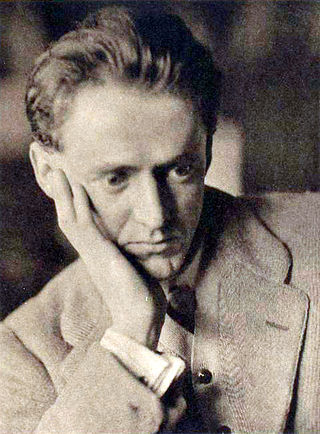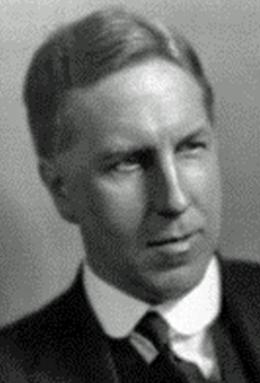Related Research Articles

Sir Arnold Edward Trevor Bax, was an English composer, poet, and author. His prolific output includes songs, choral music, chamber pieces, and solo piano works, but he is best known for his orchestral music. In addition to a series of symphonic poems, he wrote seven symphonies and was for a time widely regarded as the leading British symphonist.
The Royal Academy of Music (RAM) in London, England, is one of the oldest music schools in the UK, founded in 1822 by John Fane and Nicolas-Charles Bochsa. It received its royal charter in 1830 from King George IV with the support of the first Duke of Wellington.

The Royal Central School of Speech and Drama was founded by Elsie Fogerty in 1906, as The Central School of Speech Training and Dramatic Art, to offer a new form of training in speech and drama for young actors and other students. It became a constituent college of the University of London in 2005 and is a member of Conservatoires UK and the Federation of Drama Schools.

Swiss Cottage is an area of Hampstead in the London Borough of Camden, England. It is centred on the junction of Avenue Road and Finchley Road and includes Swiss Cottage tube station. Swiss Cottage lies 3.25 miles (5.23 km) north-northwest of Charing Cross. The area was named after a public house in the centre of it, known as "Ye Olde Swiss Cottage".

Clifford Lea Bax was a versatile English writer, known particularly as a playwright, a journalist, critic and editor, and a poet, lyricist and hymn writer. He also was a translator. The composer Arnold Bax was his brother, and set some of his words to music.
Events from the year 1901 in the United Kingdom. This year marks the transition from the Victorian to the Edwardian era, with the death of the 81-year-old Queen and the accession of her 59-year-old son.

Martin Edward Fallas Shaw was an English composer, conductor, and theatre producer. His over 300 published works include songs, hymns, carols, oratorios, several instrumental works, a congregational mass setting, and four operas including a ballad opera.

Heath Mount School is a Church of England co-educational independent prep school near Watton-at-Stone, Hertfordshire, England. It admits pupils aged 3 to 13. It was founded as Heath Mount Academy in Hampstead in 1796. In 1934 it was relocated to a Georgian mansion on the Woodhall Estate in rural Hertfordshire. For the 2022 academic year, 498 students were enrolled: boarding pupils and day pupils and girls and boys.

The Brighton Dome is an arts venue in Brighton, England, that contains the Concert Hall, the Corn Exchange and the Studio Theatre. All three venues are linked to the rest of the Royal Pavilion Estate by a tunnel to the Royal Pavilion in Pavilion Gardens and through shared corridors to Brighton Museum. The Brighton Dome is a Grade I listed building.

St Peter's Church is a church in Brighton in the English city of Brighton and Hove. It is near the centre of the city, on an island between two major roads, the A23 London Road and A270 Lewes Road. Built from 1824–28 to a design by Sir Charles Barry, it is arguably the finest example of the pre-Victorian Gothic Revival style. It is a Grade II* listed building. It was the parish church of Brighton from 1873 to 2007 and is sometimes unofficially referred to as "Brighton's cathedral".
Brighton and Hove has numerous notable pipe organs, from the small early 19th-century organs to the large 20th-century instruments in the large churches.

Thomas Frederick Dunhill was a prolific English composer in many genres, though he is best known today for his light music and educational piano works. His compositions include much chamber music, a song cycle, The Wind Among the Reeds, and an operetta, Tantivy Towers, that had a successful London run in 1931. He was also a teacher, examiner and writer on musical subjects.

All Saints Hove is an Anglican church in Hove, part of the English city of Brighton and Hove. It has served as the parish church for the whole of Hove since 1892, and stands in a prominent location at a major crossroads in central Hove.

St John-at-Hampstead is a Church of England parish church dedicated to St John the Evangelist in Church Row, Hampstead, London.

Christ Church, Hampstead, is a Church of England church in Hampstead, London. It is a church with particular connections to the old village of Hampstead and the Heath.

The Purcell Operatic Society was a short-lived but influential London opera company devoted to the production of stage works by Henry Purcell and his contemporaries. It was founded in 1899 by the composer Martin Shaw and folded in 1902. Its stage director and production designer was Gordon Craig whose productions for the company marked the beginning of his career as a theatre practitioner. Their debut production of Purcell's opera Dido and Aeneas in 1900 was one of the earliest staged performances of the work in modern times.
This is a summary of 1918 in music in the United Kingdom.

Emma Overd born Emma Weaver was a British agricultural worker and folk-singer in Somerset.
Cedric Arnold, Williamson & Hyatt was an English pipe organ maker and refurbisher in Thaxted, Essex formed in 1961 by the merger of the organ building and restoring practices of Cedric Arnold and the firm of Williamson & Hyatt. It was acquired by Hill, Norman & Beard in 1973.
References
- ↑ remotegoat website Archived 2011-07-20 at the Wayback Machine
- ↑ The Theatres Trust
- ↑ "The National Pipe Organ Register - the Hampstead Conservatoire of Music".
- ↑ Heaney, Michael (2004). "Sharp, Cecil James". Oxford Dictionary of National Biography . Oxford University Press.
- ↑ Foreman, Lewis (2004). "Bax, Sir Arnold Edward Trevor". Oxford Dictionary of National Biography . Oxford University Press.
- ↑ Innes, Christopher (1998). Edward Gordon Craig: a Vision of Theatre. Taylor & Francis.
- ↑ "The National Pipe Organ Register - St Peter's, Brighton: The Willis Organ".
- ↑ British History Online: Hampstead Social and Cultural Activities